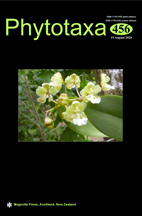Abstract
Gonzalo Halffter developed the concept of a transition zone in Mexico during the mid-twentieth century, when he superimposed the distributional patterns of different groups of Coleoptera, finding that some groups share a common biogeographical history. The complexity of the Mexican biogeographical patterns had already caught the eyes of nineteenth-century naturalists, who tried to discern some kind of order within this biotic complexity. Herein, we analyse the original studies of different nineteenth-century authors on the distributional patterns of different Mexican taxa, highlighting the main explanations provided by them. The complexity of the Mexican biota was interpreted by Humboldt as the result of the interaction between northern and southern floras, as a taxonomic peculiarity by Augustin de Candolle, as a strong biotic replacement by Alphonse de Candolle and Sumichrast, and as different dispersal stages by Wallace. Before the theory of evolution was accepted, different biogeographical patterns (endemism, diversity and taxonomic replacement gradients, among others) had coexisted without contradictions. Botanical and zoological regions first acquired a connotation of independent centres of creation, and the wider distributions (mainly disjunct distributions) later became the backbone of hypotheses concerning historical relationships between biotas based on a dispersalist model. Nevertheless, during the 20th century, the explanations of 19th century naturalists such as the limits between regions and biotic transition entered the biogeographical debate again.

